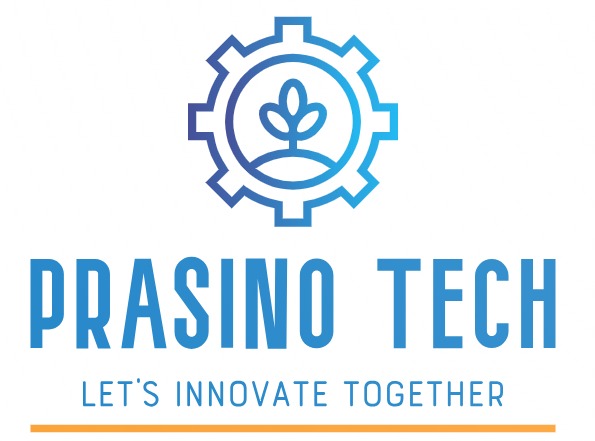In today’s rapidly evolving business landscape, integrating Environmental, Social, and Governance (ESG) principles into your corporate strategy is not just a trend—it’s a necessity. As stakeholders increasingly demand transparency and accountability, businesses that prioritize ESG and sustainability are positioning themselves for long-term success. At Prasino Tech, we believe that following best practices in ESG can help organizations achieve sustainable growth while making a positive impact on society and the environment. Here are some key best practices to consider:
1. Establish Clear ESG Goals
The foundation of a successful ESG strategy is setting clear, measurable goals. Start by identifying the ESG issues most relevant to your industry, stakeholders, and long-term objectives. Whether it’s reducing carbon emissions, enhancing workplace diversity, or improving governance practices, having well-defined targets allows your organization to stay focused and measure progress effectively.
2. Conduct a Materiality Assessment
A materiality assessment is a crucial step in understanding which ESG issues matter most to your stakeholders and have the greatest impact on your business. By engaging with stakeholders, including employees, customers, investors, and regulators, you can prioritize the ESG factors that are most relevant to your organization. This ensures that your ESG strategy is aligned with stakeholder expectations and business priorities.
3. Integrate ESG into Core Business Operations
For ESG to be truly effective, it must be integrated into the core operations of your business. This means embedding ESG considerations into decision-making processes, supply chain management, product development, and more. By aligning ESG with your business strategy, you can create synergies that drive both financial performance and positive social and environmental outcomes.
4. Implement Robust Data Collection and Reporting
Transparency is key to building trust with stakeholders. Implementing robust data collection and reporting mechanisms allows you to track your ESG performance and communicate it effectively to stakeholders. Consider adopting established frameworks like the Global Reporting Initiative (GRI), Sustainability Accounting Standards Board (SASB), or the Task Force on Climate-related Financial Disclosures (TCFD) for consistent and credible reporting.
5. Leverage Technology for ESG Monitoring
Advancements in technology, particularly in AI and IoT, have revolutionized ESG monitoring and reporting. By leveraging these technologies, businesses can gain real-time insights into their environmental impact, track social metrics, and enhance governance practices. At Prasino Tech, we specialize in AI & IoT-based MRV solutions that provide accurate, real-time data for informed decision-making.
6. Foster a Culture of Sustainability
Creating a culture that prioritizes sustainability is essential for the success of your ESG initiatives. Engage employees at all levels by educating them on the importance of ESG, encouraging sustainable practices, and recognizing those who contribute to your ESG goals. A strong culture of sustainability can drive innovation, enhance employee satisfaction, and strengthen your brand reputation.
7. Engage with Stakeholders Continuously
Ongoing stakeholder engagement is critical for the success of your ESG strategy. Regularly communicate your ESG efforts and progress, and be open to feedback. This not only enhances transparency but also helps you stay responsive to evolving stakeholder expectations. Consider creating platforms for dialogue, such as sustainability reports, town hall meetings, and social media engagement.
8. Align with the United Nations Sustainable Development Goals (SDGs)
The UN Sustainable Development Goals (SDGs) provide a global blueprint for achieving a better and more sustainable future. Aligning your ESG initiatives with the SDGs can help you contribute to global sustainability efforts while enhancing your organization’s credibility and impact. Identify the SDGs that align with your business operations and set specific targets to contribute to these goals.
9. Continuously Review and Improve
ESG and sustainability are dynamic fields that require continuous improvement. Regularly review your ESG strategy, performance, and goals to ensure they remain relevant and effective. Stay informed about emerging trends, regulations, and best practices, and be prepared to adapt your strategy as needed.
10. Partner with Experts
Navigating the complexities of ESG and sustainability can be challenging, but you don’t have to do it alone. Partnering with experts like Prasino Tech can provide you with the guidance, tools, and technologies needed to successfully implement and manage your ESG initiatives. From ESG strategy development to SDG quantification, our comprehensive services are designed to help your organization achieve its sustainability goals.
Conclusion
Integrating ESG and sustainability into your business strategy is no longer optional—it’s essential for long-term success. By following these best practices, your organization can build a robust ESG framework that drives value, fosters stakeholder trust, and contributes to a more sustainable world. At Prasino Tech, we are committed to supporting businesses on their ESG journey, providing the expertise and solutions needed to achieve meaningful and lasting impact.
